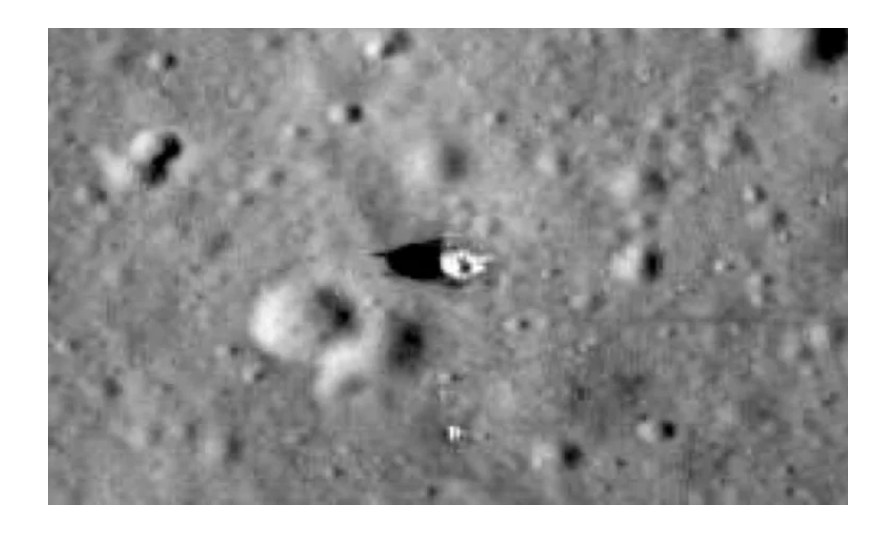According to Mark Robinson, the lead researcher of the keen-eyed camera system aboard LRO, the Chang’e 6 lander is surrounded by two craters that are approximately the same size as it and sits on the edge of a much more subdued crater that is roughly 165 feet (50 meters) wide.
On June 7, 2024, LRO saw Chang’e 6 on the far side of the moon, inside the Apollo basin. In the image’s center, the lander appears as a tiny group of bright pixels.
End shot
Five days after its landing, LRO captured images of China’s Chang’e 6 sample-return mission on the lunar far side.
The landing site coordinates, estimated with an estimated horizontal accuracy of plus or minus 100 feet (30 m), were calculated by the Lunar Reconnaissance Orbiter Camera (LROC) team as minus 41.6385 degrees north latitude and 206.0148 degrees east longitude, at minus 17,244 feet (minus 5,256 m) elevation relative to the average lunar surface.
As stated in an image explanation, “The increased brightness of the terrain surrounding the lander is due to disturbance from the lander engine and is similar to the blast zone seen around other lunar landers,”
In order to emphasize Chang’e 6’s presence on the lunar surface and to portray the area as it existed prior to its landing, LROC team members also shared a photo of the same location taken on March 3, 2022.
At the southern boundary of the Apollo basin, the Chang’e 6 landing site is located on a mare unit, or a “sea” of cooled volcanic rock.
Around 3.1 billion years ago, basaltic lava erupted south of Chaffee S crater and flowed downhill to the east until it struck a local topographic high, perhaps connected to a fault, according to Robinson and colleagues at Arizona State University.
The LROC picture description notes, “Several wrinkle ridges in this region have deformed and raised the mare surface.” “The landing site sits approximately halfway between two of these ridges. The lava flow also overlaps a slightly older flow (~3.3 Ga), visible further east, but the younger flow is distinctive because it has higher iron oxide (FeO) and titanium oxide (TiO2) abundances.” (“Ga” is scientist-speak for “billion years ago.”)
Returning home
On May 3, Chang’e 6 lifted off from the Hainan Province in southern China with the intention of bringing back to Earth lunar samples for the first time ever.
On June 3, after finishing its mission to gather lunar samples, the probe’s ascender segment left the moon carrying its valuable cargo.
The returner segment stays in lunar orbit after rejoining the Chang’e 6 mission orbiter and finishing the lunar sample transfer. It awaits the appropriate moment to begin its journey back to Earth.
On or around June 25, the mission’s return capsule—complete with its stash of lunar memorabilia—is anticipated to touch down on Earth. The capsule will end its 53-day space journey when it parachutes into a pre-selected landing zone in Siziwang Banner in the Inner Mongolia Autonomous Region of north China.




